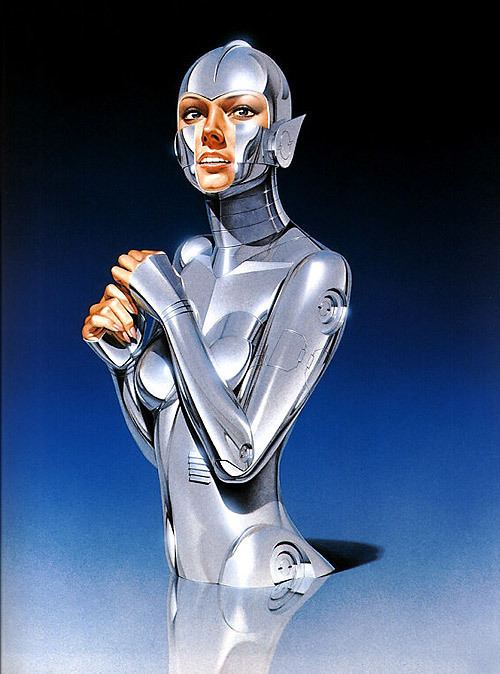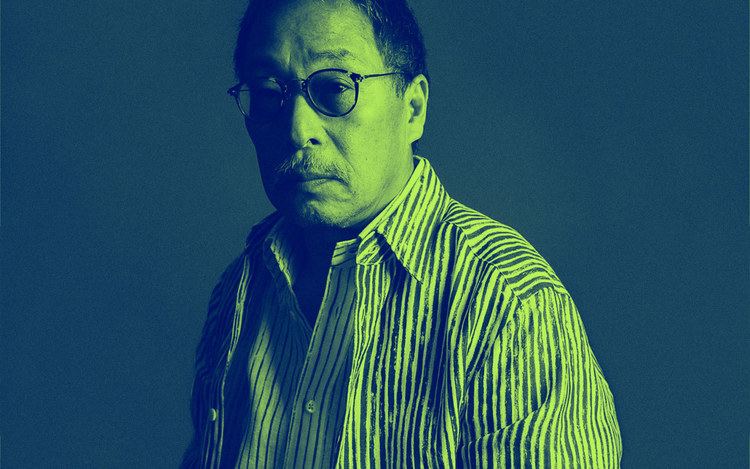Name Hajime Sorayama | ||
 | ||
Books Sorayama: XL Masterwo, Gynoids, Sorayama: Complete Works, Sorayama hyper illustrations, SORAYAMA 1964‐1999: The comp | ||
Hajime sorayama art
Hajime Sorayama (空山 基, Sorayama Hajime, born February 22, 1947) is a Japanese illustrator known for his precisely detailed, erotic portrayals of feminized, biomechanoid robots, and his design work on the original Sony AIBO robotic "pet". He describes his highly detailed style as "superrealism", which he says "deals with the technical issue of how close one can get to one's object."
Contents
- Hajime sorayama art
- In the studio with hajime sorayama to talk about his xlarge collaboration
- Early life
- Career
- References

Modern English-language editions of Soryama's art books give his name as Hajime Sorayama, using conventional Western order, with given name followed by surname. Some older publications give his name as Sorayama Hajime, using native Japanese name order, which reverses Western order.
In the studio with hajime sorayama to talk about his xlarge collaboration
Early life
Hajime Sorayama was born in 1947 in Imabari, Ehime prefecture, Japan. He received his basic education at Imabari Kita High School. In High School he starts drawing Playboy inspired pin-ups. 1965, influenced by Makoto Oda's book, Nandemo Mite yaro ("I'll go and see everything") about his travels through Europe and Asia, he took interest in Greece and decided to enter Christian Shikoku Gakuin University, to study English literature and Ancient Greek. He could not learn Greek, because the teacher had left, shortly before he arrived. When the school magazine he founded, Pink Journal, was heavily criticized by teachers as well as students, he left and transferred to Tokyo's Chuo Art School in 1967, to study art.
Sorayama graduated in 1968 at the age of 21, and gained an appointment in an advertising agency. He became a freelance illustrator in 1972. In 1978, he drew his first robot. Of this subject, he wrote: "A friend of mine, the designer Hara Koichi, wanted to use C-3PO from Star Wars for a Suntory poster presentation. But time was short and there were problems with copyright fee[s], so I was asked to come up with something."
Career
Sorayama is known for his fine art, illustration, and industrial design. Of the distinction between the first two, Soryama commented in an interview: "Unlike art, illustration is not a matter of emotion or hatreds, but an experience that comes naturally through logical thinking."
Sorayama's art book Sexy Robot, published by Genko-sha in 1983, made his organic–robotic forms famous around the world. For the work, he used ideas from pin-up art, which in the book then appear as chrome-plated gynoids in suggestive poses. His next book, Pin-up (Graphic-sha, 1984), continued in the same vein. A number of his other works similarly revolve around figures in suggestive poses, including highly realistic depictions in latex and leather. His pin-up work appeared monthly for years in the pages of Penthouse magazine, and Playboy TV later aired made a television special on Soryama's art. Sorayama said of is pin-up work: "That’s my mania. I’ve been drawing them since high school. Back then, there was this thing for the Playboy and Penthouse playmates. Now, it’s the girl-next-door, idol type, but in our day, these pin-ups were like goddesses. I guess I could describe it as my own goddess cult." In 1985 Sorayama published the video Illustration Video, his first work apart from the books of illustrations. This features work he did for the films Brain Dead (1992), Timecop (1994), and Space Trucker (1995); design of trading cards, limited-edition prints, CD-ROMs, and the cover art for Aerosmith's 2001 album Just Push Play; art exhibitions; and the initial design for what would eventually become Sony's dog-like robotic "pet", the AIBO. He published an additional four books in the 1980s, and three new volumes plus a retrospective collection in the 1990s. In 1994 he was invited to speak before Industrial Light & Magic (ILM) owned by George Lucas. Production models of Sony AIBO went to market on May 11, 1999 and first of two brought into the USA for Sorayama shows remain part of collections of Artspace Company Y LLC.
In the 2000s, Sorayama's first-generation AIBO design (the robotics of which were developed by Sony's Toshitada Doi) received the Grand Prize of Best Design award, the highest design award conferred by Japan. AIBO has since been included in the permanent collections of the Museum of Modern Art (MOMA) and the Smithsonian Institution. MOMA published a book, Objects of Design by Paola Antonelli, which included AIBO along with other noteworthy designs where form and function combine in harmony. AIBO was the first "artificially intelligent" mass-market consumer robot for entertainment applications. It has been the subject of special studies at Carnegie Mellon University and other academic institutions. Also in this decade, Soryama produced nine more books, and the Nike "White Dunk Project" included Sorayama's art among the 25 most inspiring Japanese artists.
The artist released another retrospective, Master Works, in early 2010, and a new book, Vibrant Vixens, in May 2013 and updated version "XL Masterworks" in 2014 being his most comprehensive book at that time. He worked with filmmakers in Hollywood on fantasy and science fiction projects, including a film about Penthouse. During 2012 and 2013, Sorayama worked on project(s) with American fashion designer Marc Ecko. In 2013 and 2014, Sorayama was engaged by Star Wars filmmaker George Lucas to create a spread of Twi'lek and droid fantasy Star Wars pin-ups for a tribute art book entitled Star Wars Art Concept, near the time Lucas's company LucasFilm was sold to Disney. Working on creations with the world’s most notable companies continued into 2015 to 2016. This with Sorayama’s work included in Marvel Comic’s Ironman 3 movie related product/art lineup; one of the world’s largest skateboard manufacturers Darkstar’s skate decks appointed with Sorayama organic robotics; and recently a Sorayama immersed clothing line of Samsung’s new Fashion division under designer Juun J. led by Ms. Lee Seo-hyun, the Parsons-educated second daughter of Samsung’s chairman, Lee Kun-hee. The vast majority of these projects from about the early 1990s to 2016 were coordinated by Sorayama’s longest standing representatives Ms. Yamamoto and Ms. Kubota [ Artspace Company Y, LLC and Uptight Co. LTD. ] operating in the USA and Japan.
